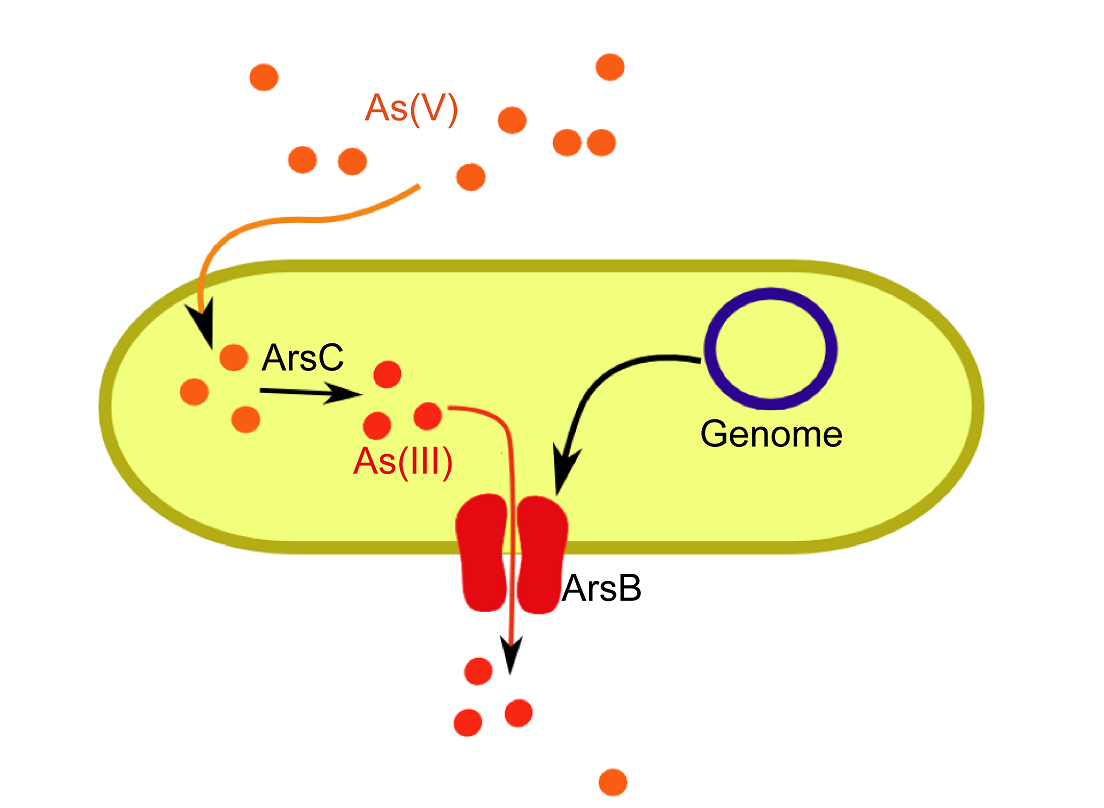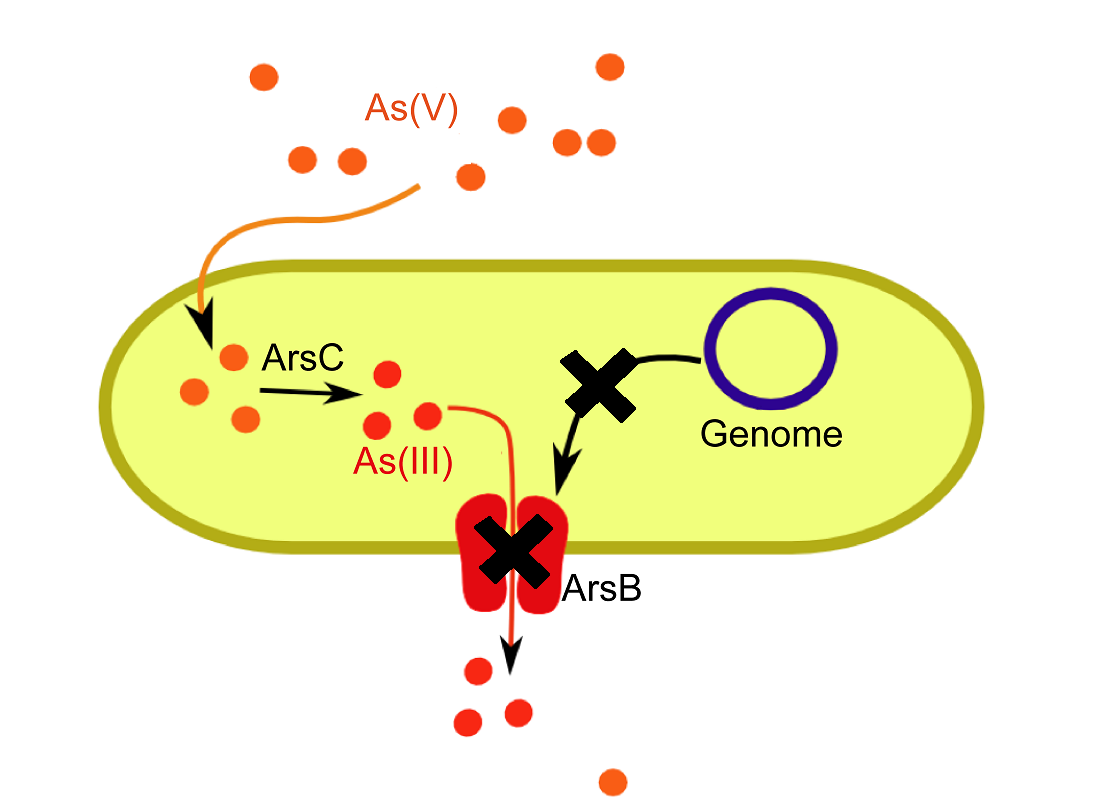Team:Virginia/Approach
From 2009.igem.org
edit
- Remove the arsenite efflux mechanism in E. coli
- Create a sequestration mechanism
ArsB Knock-out
Escherichia coli uses the [http://ecoliwiki.net/colipedia/index.php/arsB arsB] ion transporter to specifically transport arsenite (As(III)) ions out of the cytoplasm. We obtained a [http://ecoli.naist.jp/GB6/info.jsp?id=JW3469 single gene knock-out for arsB] from the [http://ecoli.naist.jp/gb6/Resources/deletion/deletion.html Keio Collection].
Sequestration Mechanism
Most microbial detoxification/resistance strategies involve efflux of heavy metals. In plants such as Arabidopsis such functions have not been observed. They may be explained by plants' inability to simply pump toxins into a surrounding solute. Instead they have evolved the ability to synthesize metallothioneins. Arabidopsis specifically synthesizes phytochelatins, a type of metallothionein. These cysteine rich peptides provide alternative binding sites for arsenic and other heavy metals.
Phytochelatin synthase
Safety
- Would any of your project ideas raise safety issues in terms of: (researcher safety, public safety, or environmental safety?)
- The University's Environmental Health and Safety department was involved in our project from the beginning. Team members absolved training to handle arsenic and proper precautions were taken in the lab for storage.
- Is there a local biosafety group, committee, or review board at your institution?
- See above.
- What does your local biosafety group think about your project?
- See above.
- Do any of the new BioBrick parts that you made this year raise any safety issues?
- Hopefully they will make the world safer rather than raise safety issues! (No)
 "
"


